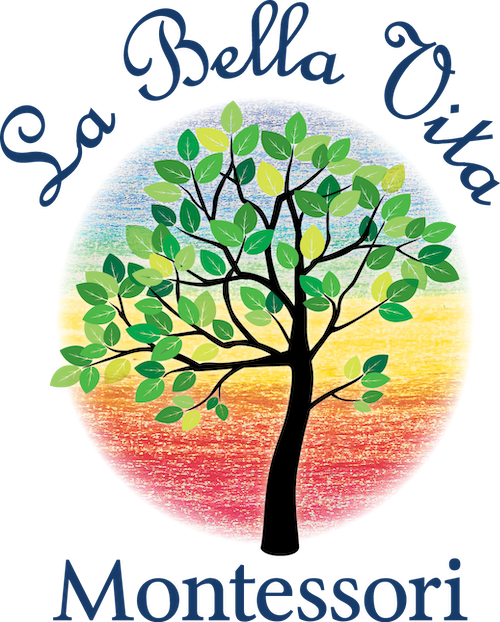Preschool matters—not just a little, but in a life-changing way. Montessori education has helped children flourish for over 100 years. On January 6, 1907, Dr. Maria Montessori, Italy’s first female physician, opened her first preschool, called the Casa Dei Bambini (Children’s House) ina working-class, underprivileged community in Rome. Her preschool students flourished and out performed more privileged children in elementary school assessments. Word spread, and soonMontessori preschools operated across Europe, America, and India.
Today, authentic Montessori schools like La Bella Vita Montessori deliver the same amazing results. Take time and do your research. With the growing popularity of Montessori, many preschools use the name to market themselves; yet as it isn’t trademarked, only some actually deliver on the Montessori promise. Read on to learn what makes for a quality Montessori preschool—and how your child can flourish in a school like La Bella Vita Montessori.
Human Beings Want To Learn
Our school philosophy is based on the method of education developed by Dr. Maria Montessori and the belief that humans want to learn. Through her research, Dr. Montessori discovered that children have natural curiosity and an innate desire to learn. She found that human beings have periods of development that are “sensitive” to different areas of growth and learning. Being exposed to a concept or skill during a corresponding “sensitive period” provides a child an opportunity for true understanding, not just rote memorization. These periods are optimal times for children to discover abilities and master them. Montessori teachers are trained to recognize these “sensitive periods” and guide the child on an optimal learning path.
The Foundation of Knowledge
Dr. Montessori believed the hand was key to the development of intelligence. The learning materials she developed reflect that belief. Through manipulative materials, the MontessoriMethod takes the child on a journey that ultimately ends with a deep-rooted understanding of ideas, through exploring the physical representation of concepts and then moving to a more abstract understanding. Dr. Montessori believed we learn through all of our senses and so developed her materials to be multi-sensory. Children taste, touch, smell, listen and look at various materials within the classroom to gain a complete understanding of them. As this more kinesthetic approach is encouraged and affirmed, the child is willing to involve their full being in life’s learning opportunities.
Educating the Whole Child
Information without the ability to communicate or problem-solve is limited in its usefulness.The Montessori curriculum is cognizant of the needs of the whole child. Within a healthy, working, learning community, the individual learner thrives and is encouraged to practice productive communication skills and appropriate large group social skills.
Our program, as well as all other Montessori programs, consists of mixed-age groupings. In our academic classes, the children stay with the same team of teachers for three years. The child, who starts each cycle learns to observe others, ask for help and has the benefit of older classmates to guide and mentor them. As the child gets older, they also have the opportunity to help others and actin a leadership position within the classroom community.
Opportunities For Exploration
Our students are given the opportunity to master equipment and concepts within their own timeframes. One of the unique qualities of Montessori materials is their multifaceted use in teaching students of a variety of ages and abilities.
In our school, we use a phonetic reading approach in conjunction with a high level of expressive and descriptive language. Language skills are incorporated throughout the entire classroom and curriculum. Processing information through writing is key.
Manipulative mathematics materials are used to ensure a solid understanding of quantities and symbols, the decimal system and arithmetical operations. In all areas of the Montessori curriculum, a student grasps concepts first through concrete representation and then moves, with the guidance of teachers and peers, to more abstract understanding.
Everything is a Learning Opportunity
Learning does not stop with academics. The classroom environment plays a huge role in the education of the child. The physical set-up of the classroom and the school itself, helps establish the child’s sense of aesthetics and ideas of both beauty and function. Dr. Montessori realized a learning environment must be both manageable and enticing in order for a child to feel free to explore, manipulate, absorb and understand all that is available.
Our teachers model appropriate, powerful and kind social behavior. They participate fully in the student’s daily routine, providing time for more personal interaction. Key to understanding how to interact with others is being able to observe the modeling of successful exchanges. In a larger group setting, opportunities to observe and practice social skills abound!
Active Engagement
While traditional education is considered to be teacher-directed, the Montessori Method is considered child-centered.
A “class” consists of a group of students of different ages and abilities. Due to the set-up of theeducational environment andthe “hands on” nature of the curriculum, each student can progressintellectually at their ideal pace, while reaping the advantages of participating in a functional,positive group situation.
The teacher takes on the role of a “guide” and, through skilled observation, knowledge of human development and training with the learning materials, provides the environment and support needed for each child to be successful.
Any subject matter provides an engaged learner the opportunity to feel the initial excitement of interest and commit to learning more by preparing a space and gathering the appropriate materials. If the learner is able to employ organizational tools to process the available information into manageable amounts, they also are able to absorb and organize the knowledge within, building a increasingly rich landscape and framework for future understanding. As the Montessori Method provides for these key elements in each learning opportunity, all subjectareas can become enticing to a confident learner.
True learning is not a compilation of facts. For engaged learners, knowledge is dynamic, progressive and useful. For our students, learning is a pleasure and deeply fulfilling!

